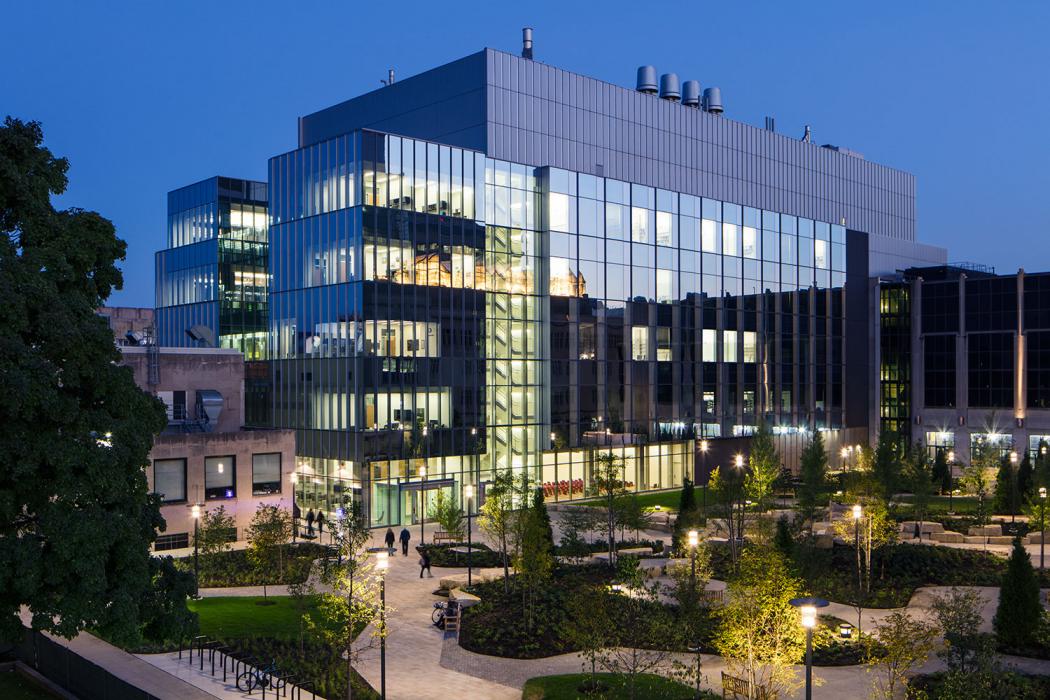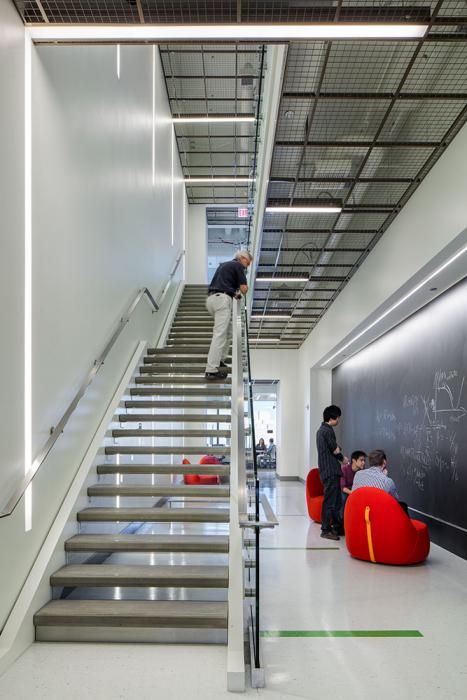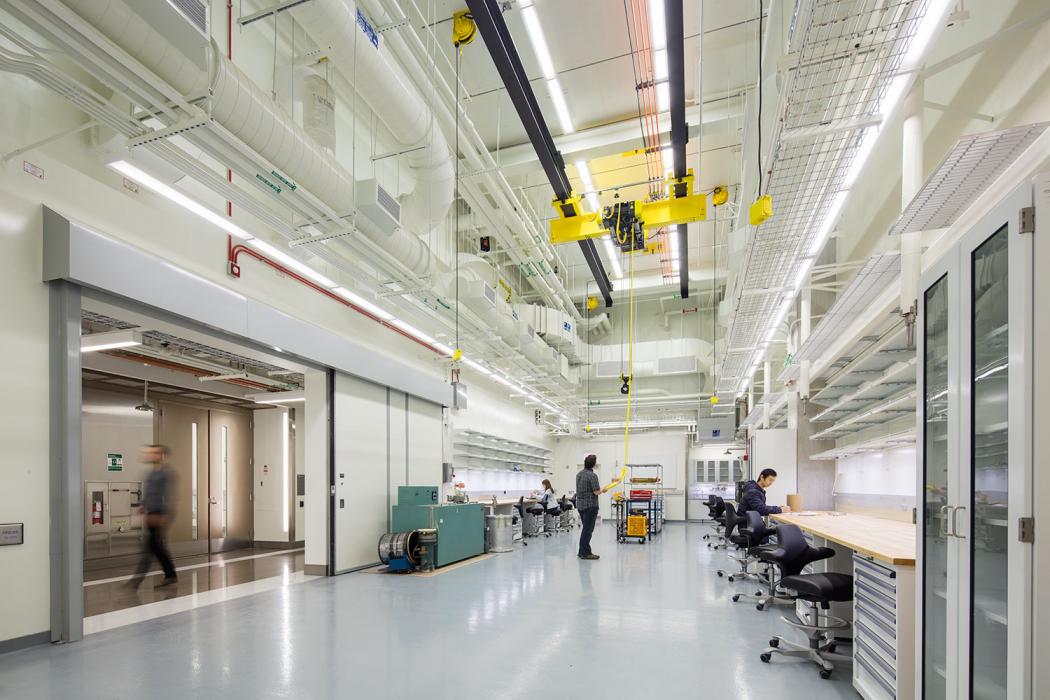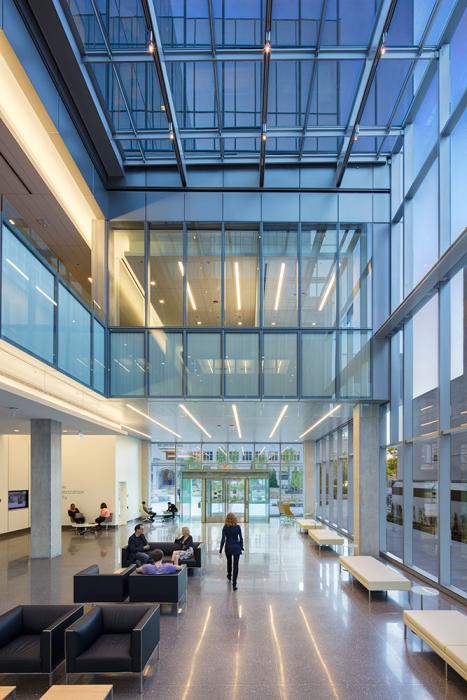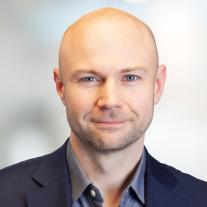
William Eckhardt Research Center
The research space supports the Division of Physical Sciences, the Institute of Molecular Engineering and the Pritzker Nanofabrication Cleanroom Facility.
Overview
The Eckhardt Center supports research space for the Division of Physical Sciences, the Institute of Molecular Engineering and the Pritzker Nanofabrication Cleanroom Facility. Replacing the Research Institute, the 117-foot-tall structure comprises five above-grade stories, with a partial mechanical room on the sixth level, and two below-grade stories totaling a depth of 50 feet. The Center connects to neighboring buildings at the second level. An existing bridge connecting the Kersten Building to the former Research Institute, over 57th Street, was temporarily shored during the demolition and is now supported by the Eckhardt Center. A new bridge connects the Center to the Accelerator Building.
We provided structural design services to HOK for the new 270,000-square-foot laboratory facility, part of The University of Chicago’s North Science Quadrangle.
Highlights
- The team worked closely with the laboratory, vibration, cleanroom and electromagnetic consultants during the design and construction phases to ensure performance requirements were met.
- The concrete superstructure houses Vibration Class A dry and wet laboratories, offices, conference rooms, and a hazardous process materials area. In addition, concrete was used for below grade structure.
- In the lower levels, high performance areas—including clean rooms, laboratories and imaging suites—required Vibration Class C, D, E and NIST A performance. This was accomplished with concrete waffle slabs and a mat foundation. The high floor-to-floor heights allow for a high bay assembly lab.
- Working closely with the architect, we developed a cost effective approach to expose concrete where possible throughout the building.
- The tight urban campus site with existing adjacent buildings posed several challenges. The demolition of the Research Institute, built integrally with its neighbors, required remediation to exterior walls and columns where shared. The remaining neighbors were as close as three feet away from the new building’s footprint.
- Underpinning methods, including micropiles and jet grouting, were employed to stabilize neighboring foundations and control settlement prior to start of construction. In conjunction, construction of the adjacent North Sciences Quad and new campus utility tunnel required new imposed loads and connectivity coordination. The research in the neighboring facilities was required to continue during demolition and construction. Vibration and settlement monitors were installed to ensure the research was not interrupted.
- A slurry wall addressed the high water table at below-grade levels Using the earth as formwork, the building’s footprint was maximized. A waterstop between panels yielded a watertight wall for the high performance areas in the lower levels. The wall also allows for future connections, by tunnel, to the proposed Phase 2.
- Schedule challenges included an advanced slurry wall bid package, as the slurry wall construction followed by basement excavation had a 10-month duration. In addition, the reassignment of laboratories during construction required extensive fast-track coordination of MEP routing and structural enhancements for vibration performance.
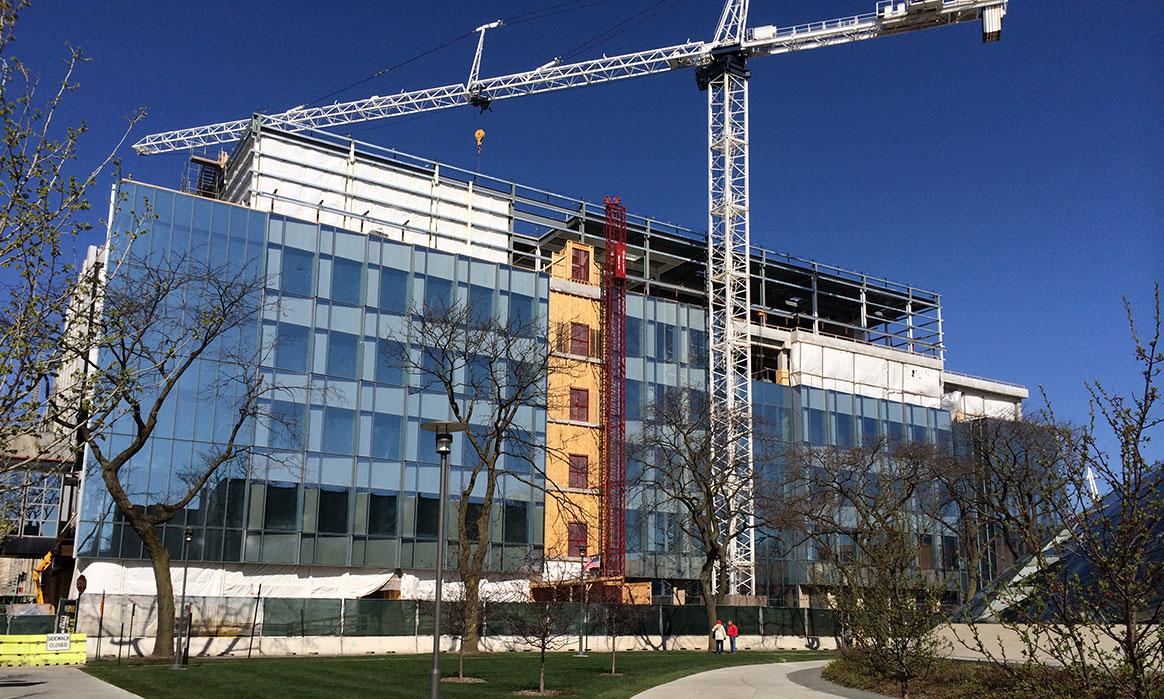 Thornton Tomasetti
Thornton Tomasetti










